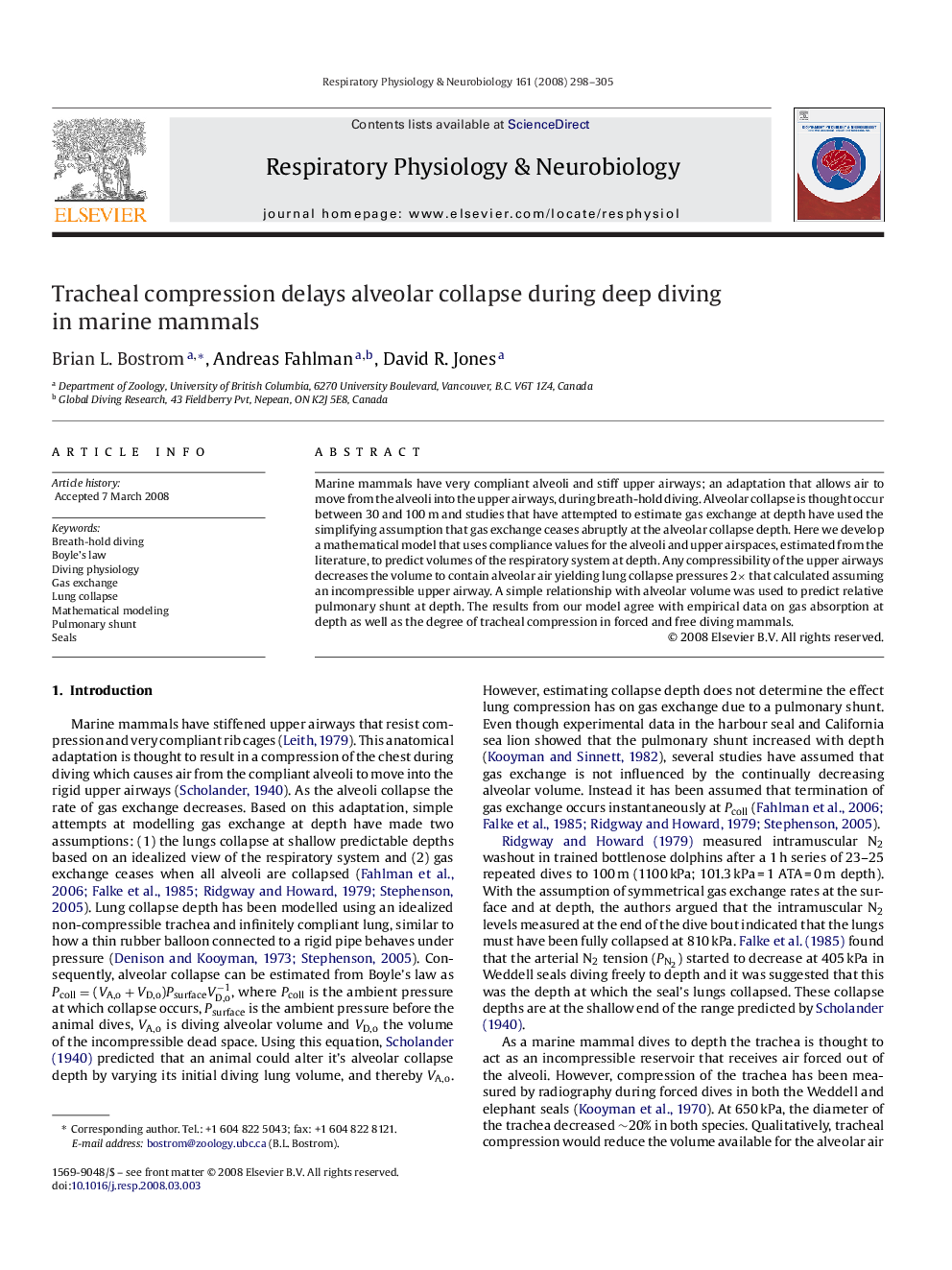| Article ID | Journal | Published Year | Pages | File Type |
|---|---|---|---|---|
| 2847981 | Respiratory Physiology & Neurobiology | 2008 | 8 Pages |
Marine mammals have very compliant alveoli and stiff upper airways; an adaptation that allows air to move from the alveoli into the upper airways, during breath-hold diving. Alveolar collapse is thought occur between 30 and 100 m and studies that have attempted to estimate gas exchange at depth have used the simplifying assumption that gas exchange ceases abruptly at the alveolar collapse depth. Here we develop a mathematical model that uses compliance values for the alveoli and upper airspaces, estimated from the literature, to predict volumes of the respiratory system at depth. Any compressibility of the upper airways decreases the volume to contain alveolar air yielding lung collapse pressures 2× that calculated assuming an incompressible upper airway. A simple relationship with alveolar volume was used to predict relative pulmonary shunt at depth. The results from our model agree with empirical data on gas absorption at depth as well as the degree of tracheal compression in forced and free diving mammals.
